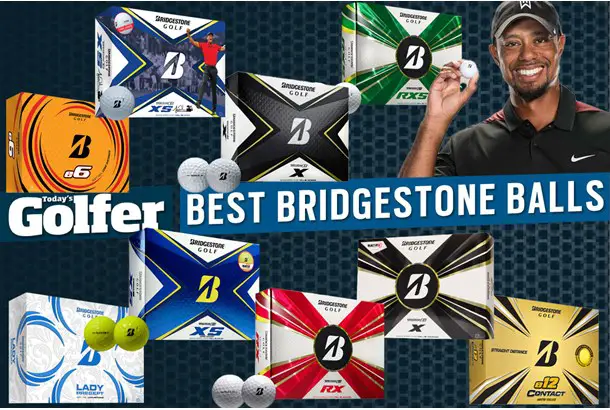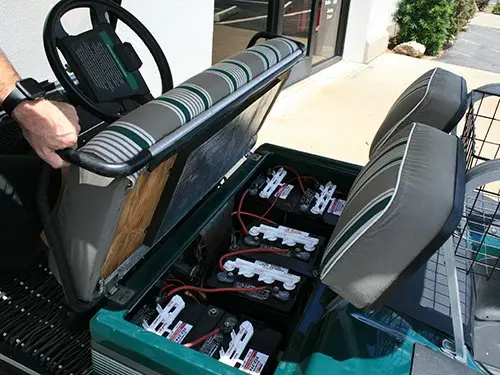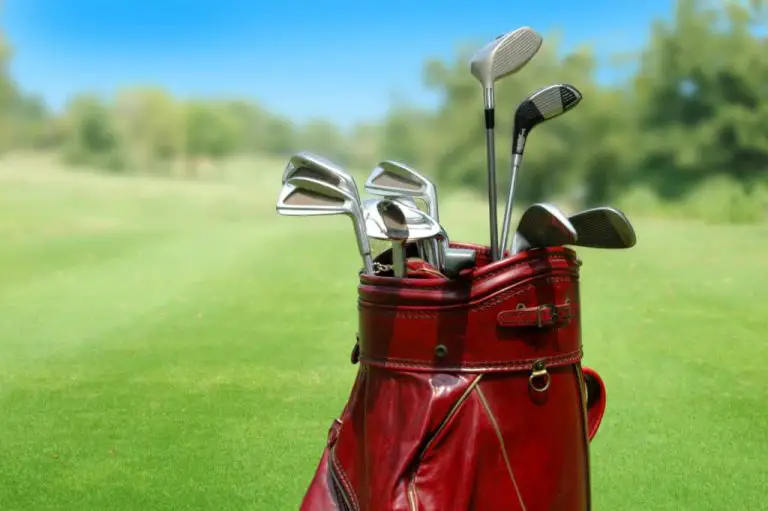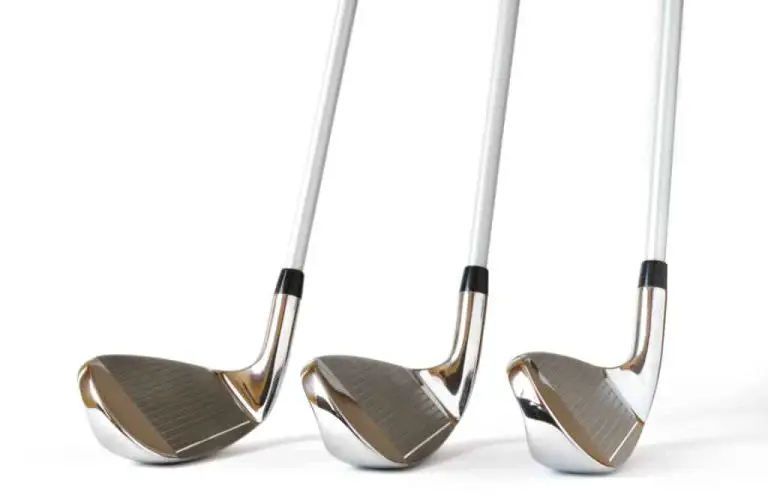What Golf Ball Is Best For Me

Are you ready to take your golf game to the next level? One crucial element that often goes overlooked is the golf ball you choose to play with. The right golf ball can make a significant difference in your performance, distance, control, and overall enjoyment on the course. But with a plethora of options available, how do you know which golf ball is the best fit for you?
In this comprehensive guide, we will unravel the secrets to selecting the perfect golf ball tailored to your unique needs. From understanding the construction and materials of golf balls to evaluating factors such as skill level, swing speed, spin control, feel and durability, course conditions, and budget, we’ll cover everything you need to know to make an informed decision.
Choosing the right golf ball is a personal and multifaceted process. It involves considering various attributes, including your skill level, swing speed, desired ball flight characteristics, and playing preferences. By understanding the key factors and how they relate to your individual game, you can identify the golf ball that will optimize your performance and enhance your overall experience on the course.
Whether you’re a beginner seeking forgiveness and distance, an intermediate golfer looking for versatility, or an advanced player aiming for precision and control, this guide will provide you with the knowledge and insights to choose the best golf ball for your unique game.
So, let’s dive in and discover the golf ball that is best for you!

Understanding Golf Ball Construction
Before we delve into the specifics of selecting a golf ball, it’s essential to understand its construction and how it influences performance. Golf balls are meticulously designed with various materials and features to optimize distance, control, and feel.
What are golf balls made of?
Golf balls typically consist of a core, cover, and dimples. The core serves as the ball’s engine and is responsible for generating initial velocity. The cover, often made of urethane or ionomer, affects spin control and feel. Dimples, strategically placed on the surface, reduce aerodynamic drag and enhance lift.
How does the construction affect performance?
The construction of a golf ball significantly impacts its flight characteristics, spin rates, and overall feel. Let’s explore the attributes and their influence on performance:
Core attributes and their impact on ball flight
Golf balls come in different core designs, including high-compression, low-compression, and dual-core. Each has its unique characteristics:
| Core Type | Attributes | Performance Impact |
|---|---|---|
| High-compression | Dense core, greater energy transfer, increased speed | Ideal for golfers with faster swing speeds seeking maximum distance and a firmer feel |
| Low-compression | Softer core, enhanced feel and control | Well-suited for golfers with slower swing speeds or those desiring a softer feel and more control |
| Dual-core | Combines aspects of both high and low compression | Balances distance, feel, and control for a wide range of swing speeds |
Cover materials and their influence on feel and spin
The cover material plays a crucial role in determining the ball’s feel and spin rates. Here are the commonly used cover materials and their characteristics:
| Cover Material | Attributes | Performance Impact |
|---|---|---|
| Urethane | Soft feel, enhanced spin control, excellent greenside performance | Preferred by skilled golfers who prioritize control and shot shaping |
| Ionomer | Durable, lower spin rates, distance-focused | Suited for golfers seeking maximum distance, durability, and a more budget-friendly option |
| Surlyn | Firm feel, less spin, increased durability | Well-suited for high-handicap golfers who desire greater forgiveness, increased durability, and a more affordable price point |
| Hybrid | Combines the characteristics of urethane and ionomer covers, offering a balance of feel | Provides a blend of performance attributes, ideal for golfers seeking a well-rounded ball without compromising on distance or control |
By understanding the construction of golf balls and the impact of core attributes and cover materials, you can narrow down your options based on your playing style, skill level, and personal preferences. However, choosing the right golf ball goes beyond construction alone. Let’s explore other essential factors that come into play.
Assessing Skill Level and Playing Style
One of the key considerations in choosing the best golf ball for you is assessing your skill level and playing style. Understanding where you stand in terms of golfing ability and experience will help you identify the ball characteristics that align with your game.
Determining your skill level and experience
Are you a beginner just starting to explore the game of golf? Or are you an experienced player looking to refine your skills? Evaluating your skill level and experience is crucial in selecting the appropriate golf ball.
Consider the following factors when assessing your skill level:
- Handicap: Your handicap is a measure of your golfing ability relative to a standard. It gives you an indication of your overall skill level and can help guide your ball selection process.
- Consistency: How consistent are you with your ball striking? Are you able to consistently hit the ball on the sweet spot? Evaluating your level of consistency will help you understand the type of ball that can enhance your game.
How does skill level affect ball selection?
Different skill levels benefit from different ball characteristics. Let’s explore how skill level influences ball selection:
High-handicap golfers: Forgiveness and distance
High-handicap golfers, who may struggle with consistent ball striking, can benefit from using forgiving golf balls. These balls are designed to minimize the effects of off-center hits and provide more distance and forgiveness. They often have a larger core and a softer cover, allowing for increased forgiveness and better feel.
Pro Tip: Look for golf balls with a high moment of inertia (MOI) and low compression. These features enhance forgiveness and help generate more distance even on mishits.
Mid-handicap golfers: Versatility and performance
Mid-handicap golfers, who have developed a decent level of consistency in their game, can opt for versatile golf balls. These balls offer a balanced combination of distance, control, and feel. They strike a middle ground between forgiveness and high-performance characteristics, catering to a wider range of players.
Pro Tip: Look for golf balls with a mid-compression core and a cover material that provides a good balance of distance and spin control. These balls offer versatility and can help you elevate your game to the next level.
Low-handicap golfers: Precision and control
Low-handicap golfers, with excellent ball-striking skills and consistency, can benefit from using high-performance golf balls. These balls are designed to deliver exceptional control, spin, and feel. They often feature a multi-layer construction, combining high-compression cores and urethane covers to maximize performance for skilled players.
Pro Tip: Look for golf balls with a high-compression core and a urethane cover. These balls offer maximum control, spin, and feel, allowing you to shape shots and fine-tune your performance on the course.
Determining your skill level and selecting a golf ball tailored to your abilities will enhance your overall experience and allow you to capitalize on your strengths on the course.
Analyzing Swing Speed and Distance
Understanding your swing speed and its relationship with the compression of a golf ball is essential to optimize performance and maximize distance. Swing speed refers to the velocity at which the clubhead travels during the downswing. Let’s explore how swing speed influences ball compression and which compression level suits different swing speeds.
Understanding swing speed and its significance
Swing speed plays a crucial role in determining the type of golf ball that can optimize your distance and overall performance. It’s important to have a general idea of your swing speed to guide your ball selection process.
How to measure swing speed?
There are various methods to measure swing speed, ranging from advanced launch monitor technology available at golf facilities to handheld swing speed radar devices. Consulting with a golf professional or using a swing speed measurement device can provide valuable insights into your swing speed.
Matching compression to swing speed
Once you have an idea of your swing speed, it’s important to match the compression of the golf ball to optimize performance. Compression refers to the deflection of the ball upon impact and how it interacts with the clubface.
Low compression for slower swing speeds
If your swing speed is on the lower end of the spectrum, you’ll benefit from using a golf ball with a lower compression rating. Low-compression balls are designed to compress more easily upon impact, resulting in increased ball speed and distance. They offer a softer feel and allow golfers to generate maximum energy transfer with slower swings.
Pro Tip: Look for golf balls with compression ratings below 70. These balls are well-suited for golfers with slower swing speeds, providing optimal energy transfer and distance.
Mid-compression for moderate swing speeds
If your swing speed falls in the moderate range, you’ll find that mid-compression golf balls are suitable for your game. These balls strike a balance between low and high compression, providing a blend of distance and feel. They are suitable for a wide range of players and offer a versatile performance across different swing speeds.
Pro Tip: Look for golf balls with compression ratings in the range of 70 to 90. These balls offer a good balance of distance, control, and feel, catering to golfers with moderate swing speeds.
High compression for faster swing speeds
For golfers with faster swing speeds, high-compression golf balls are the optimal choice. These balls are designed to withstand the high impact forces generated by powerful swings, resulting in more control and increased ball speed. They offer a firmer feel and provide optimal performance for golfers with faster swing speeds.
Pro Tip: Look for golf balls with compression ratings above 90. These balls offer the necessary firmness and control to handle high swing speeds, maximizing your distance and overall performance.
Matching the compression of a golf ball to your swing speed allows for optimal energy transfer and can significantly impact your distance and overall performance. Consider getting your swing speed measured by a professional or utilizing swing speed measurement devices to determine your ideal compression level.
Evaluating Spin Control and Shot Shaping
Spin control is a critical aspect of golf ball performance, influencing shot shaping, greenside control, and overall playability. The ability to control spin allows you to achieve desired ball flight trajectories and navigate various course conditions. Let’s explore the importance of spin control and how different golf balls can influence it.
The role of spin in shot shaping and control
Spin is a vital element in shaping shots and achieving control over the ball’s flight. Backspin, also known as vertical spin, imparts lift and helps the ball stay in the air longer. Sidespin, also known as horizontal spin, influences the ball’s lateral movement. By manipulating spin rates, golfers can achieve draws, fades, and other shot shapes.
Backspin and its impact
Backspin plays a crucial role in achieving maximum distance and greenside control. When struck properly, a golf ball with appropriate backspin creates lift and reduces the effects of gravity, allowing the ball to stay in the air longer and carry further. Additionally, backspin helps the ball stop quickly on the greens, aiding in approach shot control and achieving precise distances.
Pro Tip: To optimize backspin, look for golf balls that offer a balance between distance and spin control. The cover material, construction, and dimple pattern influence backspin characteristics.
Sidespin and shot shaping
Sidespin refers to the spin that influences the ball’s lateral movement. Controlling sidespin allows you to shape your shots and navigate around obstacles on the course. Understanding how different golf balls affect sidespin can help you achieve desired shot shapes, such as draws or fades.
Pro Tip: For shot shaping, consider golf balls that offer a good balance between distance and workability. The cover material and construction influence sidespin characteristics.
Balancing spin rates with personal preferences
Different golf balls offer varying levels of spin rates to suit different player preferences and shot requirements. Let’s explore the three categories of spin and their associated ball characteristics:
Low-spin balls for reducing side spin
Low-spin golf balls are designed to minimize sidespin, helping to reduce the chances of hooks and slices. They tend to produce a flatter trajectory and less spin around the greens. These balls are suitable for golfers who prefer a more straightforward, straighter ball flight and desire greater control over wayward shots.
Pro Tip: Look for golf balls with a lower spin profile and a focus on reducing sidespin. These balls can help you keep the ball in play and minimize the effects of wayward shots.
Mid-spin balls for balanced performance
Mid-spin golf balls strike a balance between distance and control. They offer a moderate level of spin, allowing for reasonable shot shaping capabilities while still providing distance off the tee. These balls are versatile and suit a wide range of players, offering a good compromise between forgiveness and workability.
Pro Tip: Look for golf balls with a mid-range spin profile. These balls offer a balance of distance and control, providing a versatile performance across different aspects of the game.
High-spin balls for increased shot shaping capabilities
High-spin golf balls are designed to generate significant spin rates, particularly around the greens. These balls offer enhanced control, allowing skilled golfers to manipulate the ball’s flight and achieve precise shot shapes. They excel in providing stopping power on approach shots, allowing for better control on the greens.
Pro Tip: Look for golf balls with a higher spin profile, especially around the greens. These balls offer increased shot shaping capabilities and provide better control over the ball’s flight and landing.
Choosing the right spin rate depends on your skill level, desired shot shapes, and personal preferences. Consider your ability to control spin and select a golf ball that aligns with your needs.
Considering Feel and Durability
The feel of a golf ball plays a significant role in your overall experience and confidence on the course. Additionally, considering the durability of a golf ball ensures longevity and cost-effectiveness. Let’s explore the factors related to feel and durability when selecting a golf ball.
Understanding the importance of ball feel
The feel of a golf ball refers to the feedback and sensation experienced upon impact. It influences your ability to judge distances, control shots, and gauge the quality of your strikes. The feel of a golf ball is subjective and can vary based on personal preference.
Soft feel balls for enhanced feedback
Soft-feeling golf balls are popular among golfers who prioritize feedback and control. They offer a responsive feel upon impact, allowing for better feedback on strikes and increased touch around the greens. However, softer balls may have a trade-off in terms of durability and may scuff more easily.
Pro Tip: Look for golf balls with a softer feel and excellent greenside performance. These balls provide enhanced feedback and control, especially in short game situations.
Firm feel balls for increased durability
Firm-feeling golf balls are known for their durability and resistance to scuffs. These balls tend to provide a more solid and robust sensation upon impact, with less emphasis on feedback and a firmer feel overall. They are often preferred by golfers who prioritize longevity and want a ball that can withstand more rounds of play.
Pro Tip: Look for golf balls with a firmer feel and increased durability. These balls are suitable for high-handicap golfers or those looking for longer-lasting performance.
By considering your preference for feel and evaluating the durability characteristics of different golf balls, you can find a ball that strikes the right balance between responsiveness and long-lasting performance.
Considering Course Conditions
The golf course itself plays a significant role in dictating the performance characteristics of a golf ball. Factors such as course firmness, greens conditions, and prevailing weather can influence your ball selection. Let’s explore how different course conditions can impact your choice of golf ball.
How does the golf course influence ball choice?
Different golf courses have varying characteristics, such as firmness, grass type, and green speeds. These factors can significantly influence the behavior of your shots and the performance of your golf ball. Considering the course conditions allows you to adapt your ball selection to optimize your game.
Adapting to different course conditions
Let’s examine two common course conditions and the golf ball characteristics that can excel in each:
Selecting balls for soft course conditions
On courses with soft fairways and receptive greens, golfers can benefit from using balls that promote higher spin rates and provide ample stopping power. These balls help maximize control on approach shots and aid in holding the green. Urethane-covered balls are often favored in such conditions, as they offer excellent spin control and greenside performance.
Pro Tip: Look for golf balls with a focus on spin and control. These balls, with a urethane cover, offer the necessary characteristics to navigate soft course conditions effectively.
Choosing balls for firm course conditions
Courses with firm fairways and fast greens demand golf balls that prioritize distance and roll. These courses require golfers to generate maximum distance off the tee and achieve ample rollout on the fairways. Ionomer or Surlyn-covered balls are popular choices for firm conditions due to their durability and distance-focused performance.
Pro Tip: Look for golf balls that prioritize distance and have a focus on roll. These balls, with an ionomer or Surlyn cover, are well-suited for firm course conditions.
Understanding the course conditions you frequently encounter allows you to select a golf ball that adapts well to the unique challenges posed by each course.
Taking Budget into Account
While performance is crucial, it’s essential to consider your budget when selecting a golf ball. High-end premium balls often come with advanced features and technologies that cater to specific needs but can be more expensive. However, budget-friendly options can still provide satisfactory performance. Let’s explore how to strike a balance between performance and affordability.
The impact of price on ball selection
Premium golf balls often come with a higher price tag due to their advanced construction and performance attributes. These balls are designed for skilled golfers who can fully utilize their features. However, the cost can be prohibitive for some players. Balancing performance and affordability is key.
Balancing performance and affordability
Consider the following options when seeking a ball that offers a good balance of performance and affordability:
High-end premium balls and their benefits
If performance is your top priority and budget is less of a concern, investing in high-end premium golf balls can offer you the latest technology, exceptional control, and optimized performance. These balls are often used by professional golfers and avid players who seek the highest level of performance.
Pro Tip: Look for high-end premium balls that align with your playing style and preferences. These balls provide cutting-edge technology and superior performance, suitable for golfers seeking the ultimate in performance.
Value-priced balls and their trade-offs
For those looking for more budget-friendly options without sacrificing performance entirely, there are value-priced golf balls available. These balls offer satisfactory performance at a more affordable price point. While they may not have the same level of advanced technology or features as premium balls, they can still provide a decent playing experience for recreational golfers.
Pro Tip: Look for value-priced golf balls that offer a good balance between performance and affordability. These balls can provide a cost-effective solution without compromising on the essential aspects of playability.
Finding the right balance between performance and affordability is a personal decision. Evaluate your priorities and budget to choose a golf ball that meets your needs without stretching your wallet too thin.
Seeking Recommendations and Testing
While the information provided so far serves as a guide, it’s always beneficial to seek recommendations and test different golf balls to find the right fit for your game. Here are some avenues to explore when making your final decision.
Consulting with golf professionals and experts
Reach out to golf professionals, instructors, or knowledgeable individuals who can provide insights and recommendations based on your playing style, skill level, and goals. Their expertise can help you narrow down your choices and identify golf balls that align with your needs.
Utilizing online resources and product reviews
Take advantage of online resources such as golf forums, websites, and product reviews. Read up on the experiences and opinions of other golfers who have used specific balls. These insights can provide valuable information and help you gauge the performance and suitability of different golf balls.
Testing different golf balls to find the right fit
Ultimately, the best way to determine the right golf ball for you is through personal testing. Purchase a selection of balls that align with your preferences and play several rounds or practice sessions with them. Observe the performance, feel, and results to find the ball that complements your game the most.
Pro Tip: When testing different golf balls, pay attention to the performance aspects that matter most to you, such as distance, control, feel, and spin. Take note of the characteristics of each ball and how they affect your overall experience on the course.
By seeking recommendations, utilizing online resources, and conducting personal testing, you can gather valuable insights and make an informed decision on the best golf ball for your game.
Conclusion
Choosing the right golf ball is a critical aspect of optimizing your performance on the course. By considering factors such as golf ball construction, skill level, swing speed, spin control, feel and durability, course conditions, and budget, you can narrow down your options and find a ball that suits your playing style and preferences.
Remember, the perfect golf ball for you may require some experimentation and testing. Embrace the process, seek recommendations, and trust your own experience on the course. Finding the ideal golf ball tailored to your game will enhance your enjoyment, improve your performance, and elevate your overall golfing experience. So, go out there, explore the possibilities, and find your perfect match!






